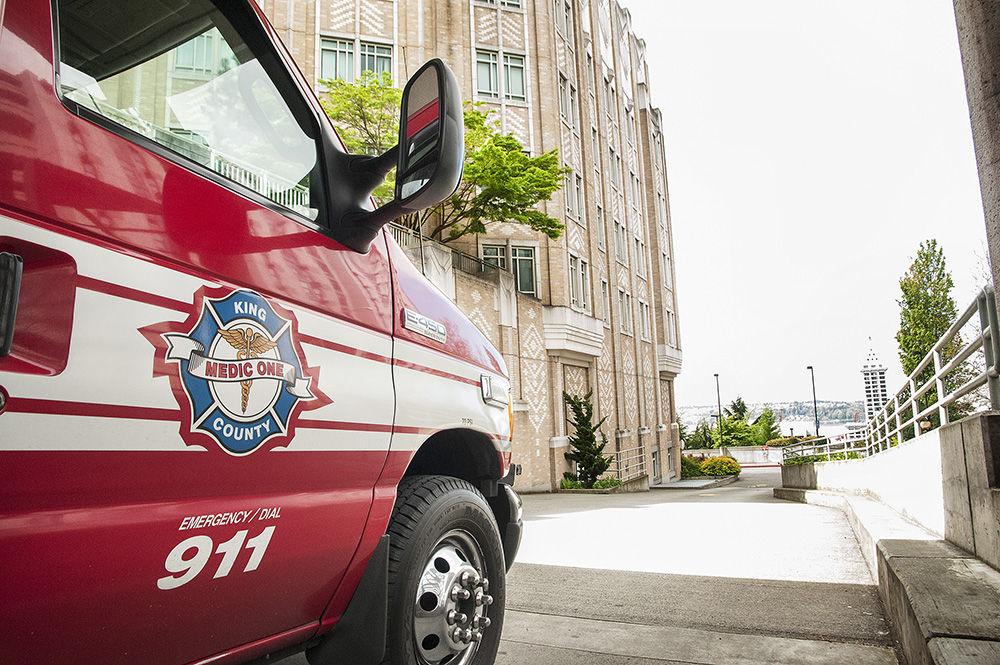
Study spotlights cardiac arrest survival in King County
For many years, Seattle and surrounding King County have shared a reputation of being among the best places in the United States to experience a cardiac arrest — due to the expert, resolute efforts of stakeholders at many levels.
The contributors to this achievement have not rested on laurels. Newly published research shows that, in King County, resuscitated individuals’ survival rate improved significantly between 2001 and 2020. In a study of 25,118 cases of out-of-hospital cardiac arrest, survival to hospital discharge improved from 14.7% (2001-2005) to 18.9% (2016-2020). For the subset of people who require a defibrillator shock to restore their heartbeat, survival increased from 35% to 48%.
Nationally, the survival rate among people who experience an out-of-hospital cardiac arrest is about 10%, according to the American Red Cross.
“Fundamentally, it is hard to resuscitate people. It takes continual coordination: The prehospital care providers have to do everything correctly to get a heartbeat back as quickly as possible. Hospital providers have to extend the care and let the patient's brain recover and treat the underlying issue that caused the event,” said Dr. Thomas Rea. He is a professor of medicine at the University of Washington School of Medicine and medical director of King County Emergency Medical Services (EMS).
Throughout the county, stakeholders have created a “culture of responsibility and vigilance,” he said, referring to dispatch centers, fire departments, emergency medical services, law enforcement, hospitals and the community.
For example, Rea said, 911 emergency dispatchers are often able to quickly identify the arrest over the phone and coach bystanders in CPR, a technique that keeps oxygenated blood flowing to the brain and other organs. First-responders strive for rapid response times despite considerable increases to population, urban density and traffic. In some cases, King County Sheriff's deputies and municipal police officers proactively respond, arriving on-scene before medical first-responders and starting resuscitation efforts.
In King County, calls to 911 activate the EMS system, which initially dispatches firefighters who are certified as emergency medical technicians and equipped with automated external defibrillators (AEDs). Paramedics are second-tier responders who are activated for serious incidents, including suspected cases of out-of-hospital cardiac arrest. Resuscitated patients are taken to one of a dozen hospitals that offer 24/7 intensive care, the study said.
During the study span, King County Emergency Medical Services and their collaborators introduced multiple quality-improvement programs. These involved dispatchers, law enforcement, first-responders, paramedics and the local community. In parallel, hospitals employed new protocols to manage patients’ coronary care and their body temperature more effectively.
“We have a long history here in King County of continually seeking ways to improve survival from out-of-hospital cardiac arrest,” said Michele Plorde, King County EMS division director. “This study demonstrates so well the cumulative impact we can have when we work collaboratively with all our EMS partners to test new ideas, measure their impacts and implement the strategies that result in improved outcomes.”
The study authors also highlighted community members’ contribution by noting “increases in bystander CPR and early AED application due to police and public AED programs.”
Rea pointed to King County’s long history of analyzing how stricken citizens can be kept alive.
“It started with cardiologist Dr. Leonard Cobb and Seattle Fire Chief Gordon Vickery establishing Medic One more than 50 years ago. They set a high expectation that we carefully measure and improve resuscitation in part because it is a marker of the quality of emergency care in the region. So in King County, we continue to hold tightly to this mindset of carefully making changes and innovating to improve survival,” he said.
The study findings were published July 16 in JAMA Cardiology. The first author was Dr. Owen McBride, a former emergency medical services fellow at the UW School of Medicine. Rea was the paper’s corresponding author.